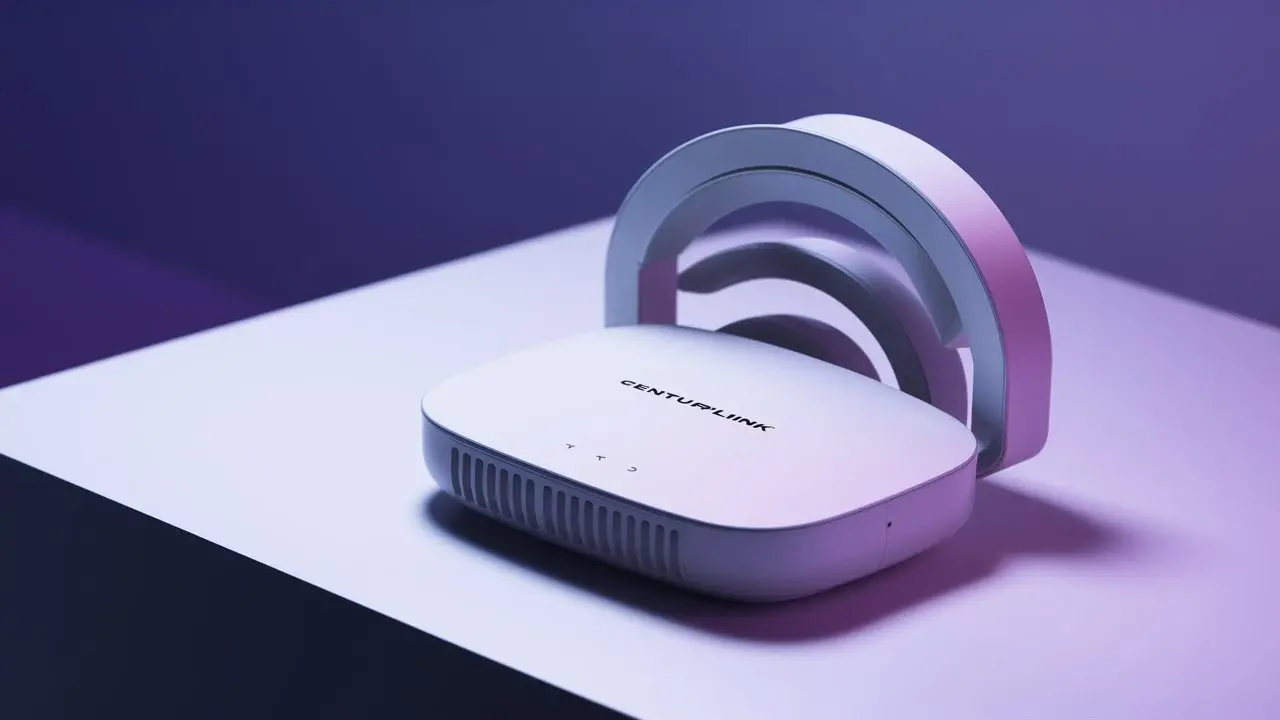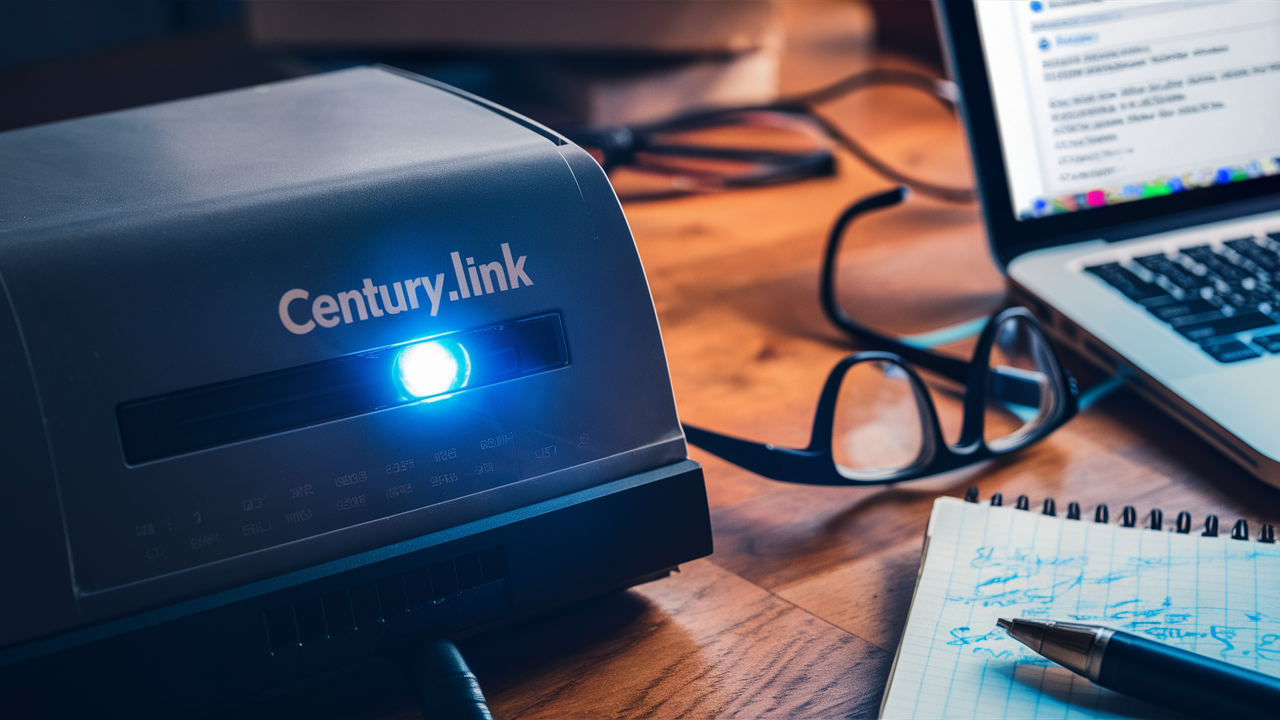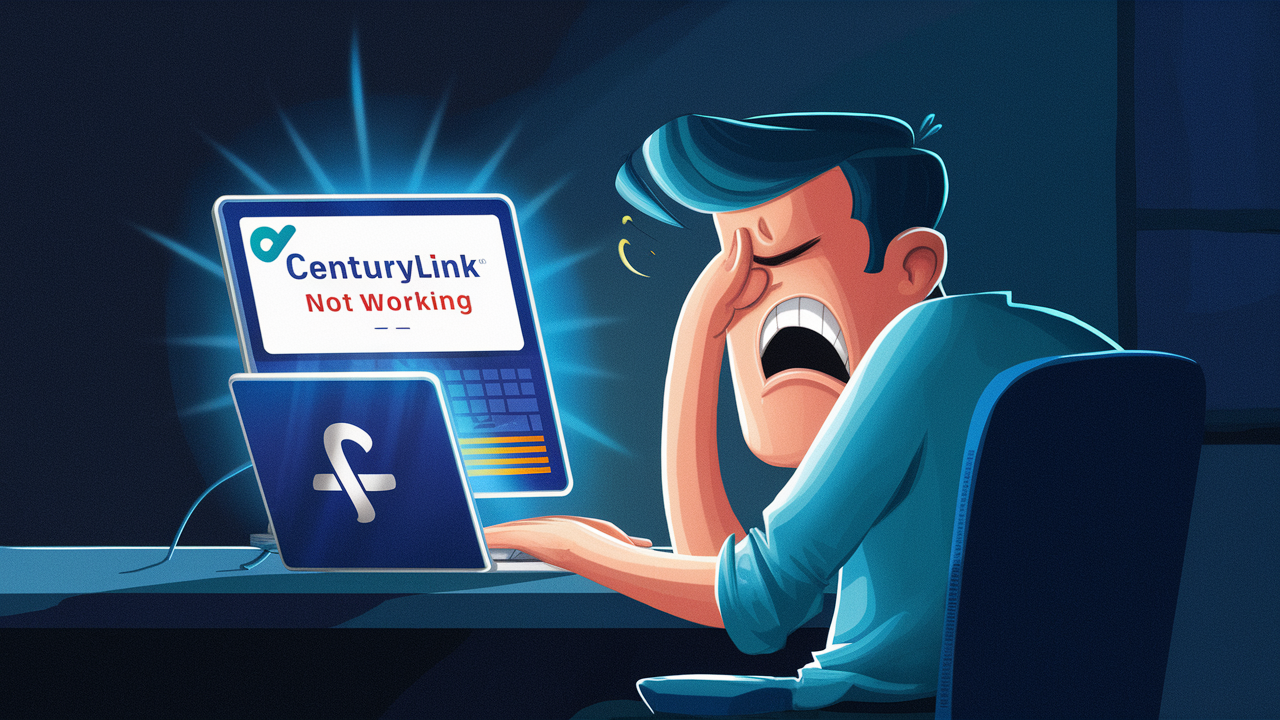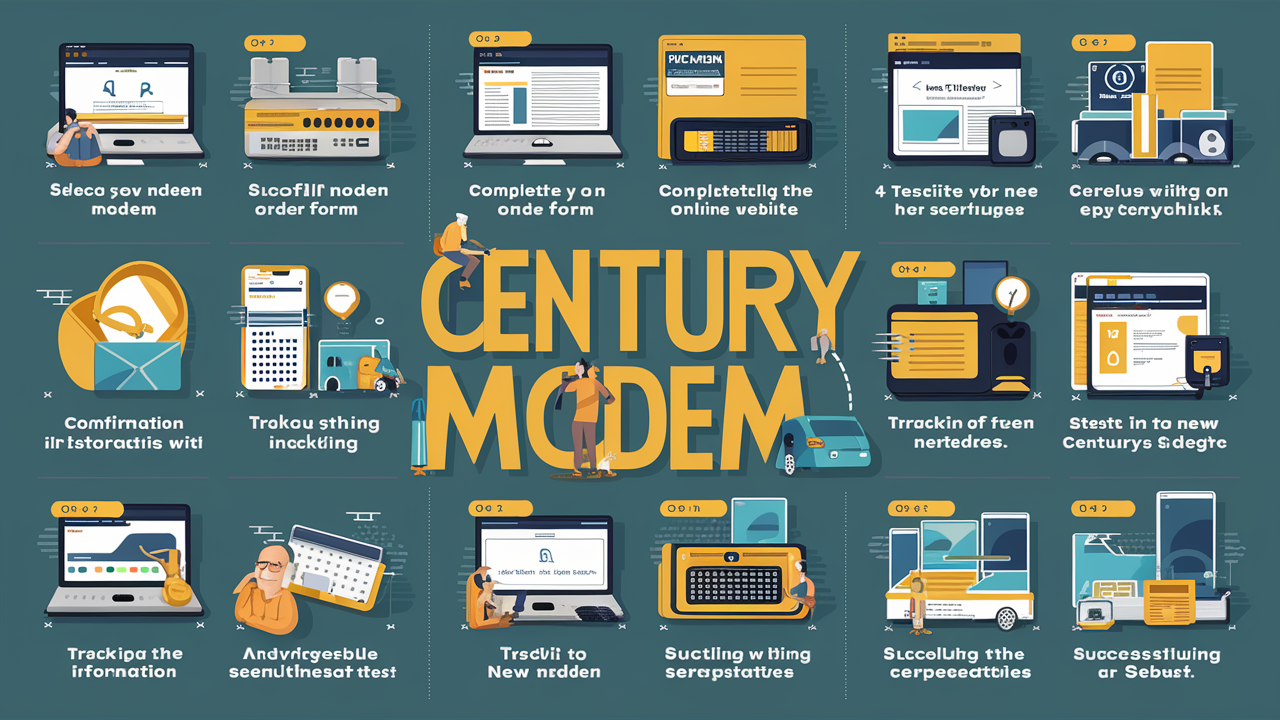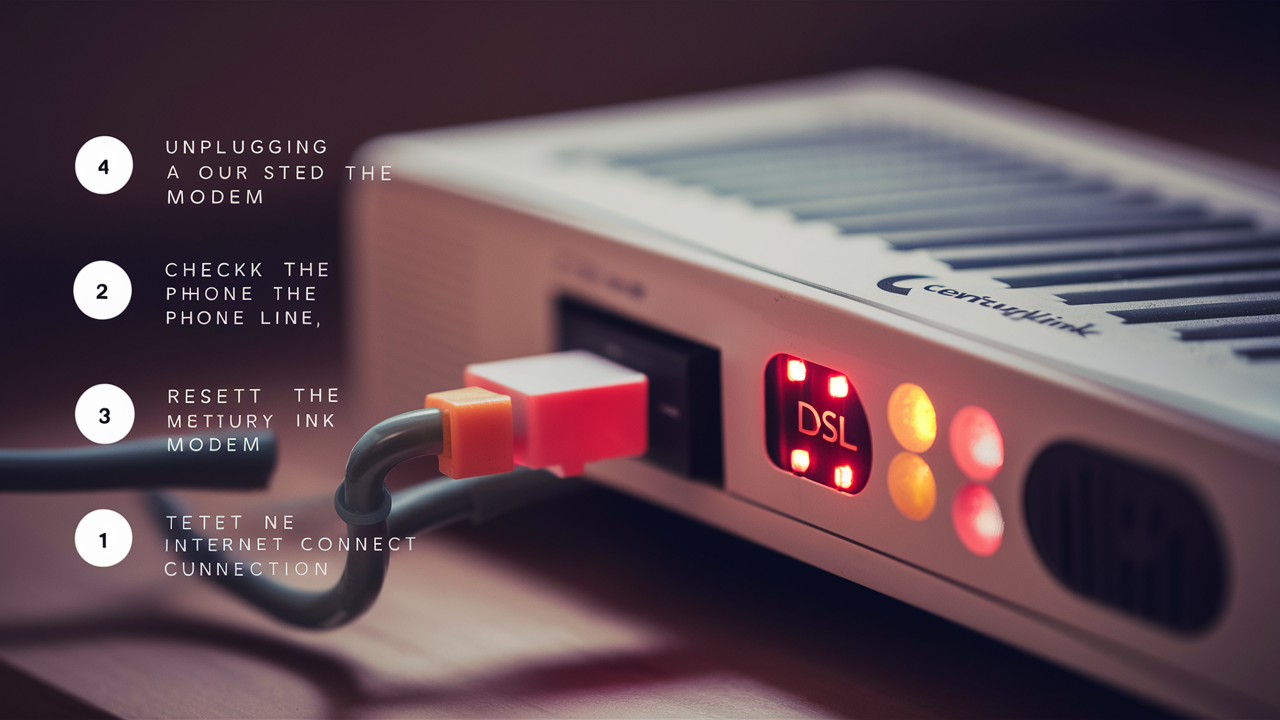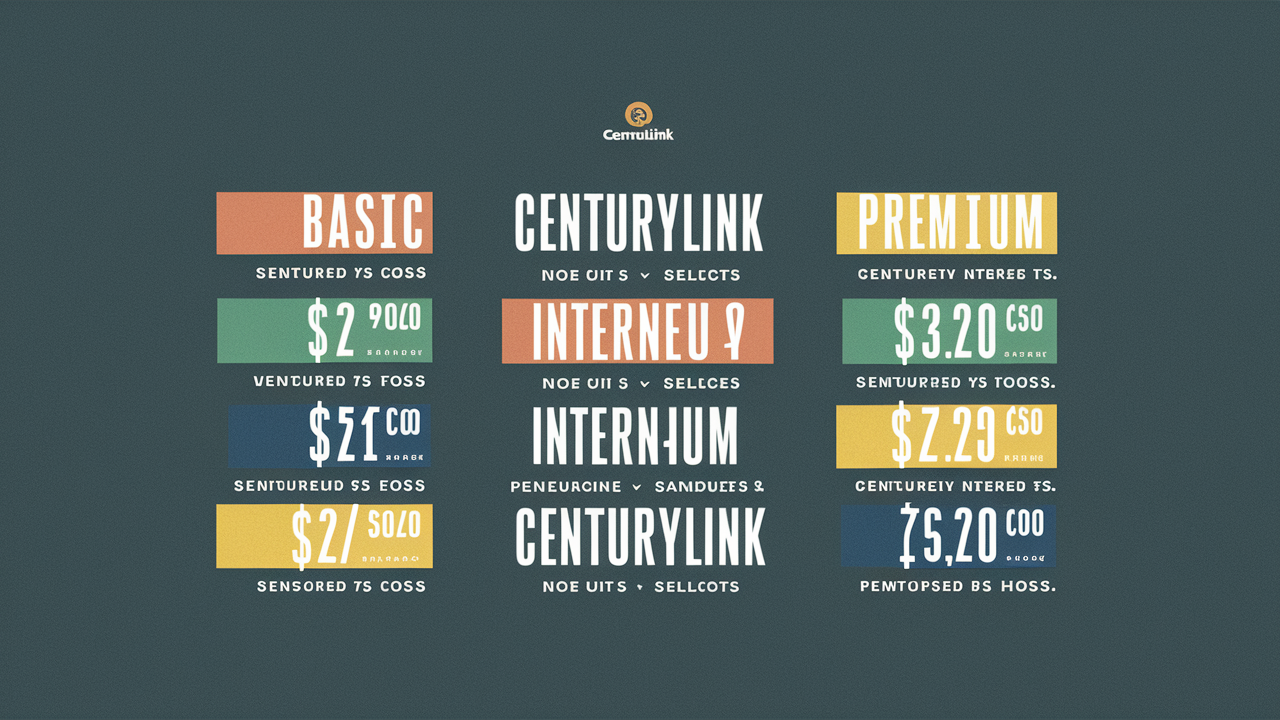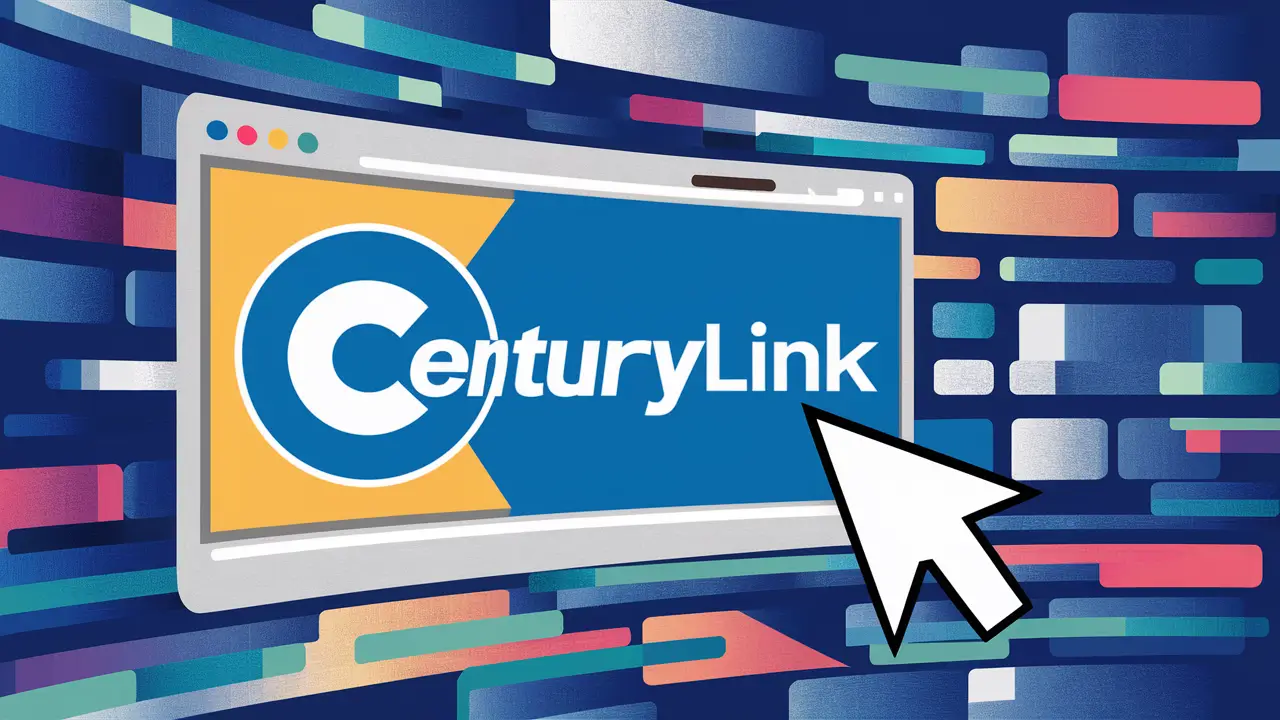
Centurylink, now known as Lumen Technologies, is a major telecommunications company offering a wide range of internet, phone, and TV services. Understanding its offerings, service areas, and how it compares to competitors is crucial for consumers seeking reliable connectivity solutions.
What is Centurylink (Now Lumen Technologies)?
Centurylink, a name many consumers recognize for internet and phone services, has undergone a significant rebranding and strategic shift. In 2020, the company officially transitioned its brand to Lumen Technologies. This change reflects a broader evolution beyond traditional telecommunications into a more comprehensive platform for digital infrastructure and enterprise solutions. While the Centurylink brand still exists for residential services in many areas, understanding its current identity as Lumen is key to grasping its full scope. Lumen Technologies operates as a global network, cloud, and technology solutions provider, aiming to power the applications and experiences of the future. For consumers, this means access to internet services that are increasingly reliant on advanced network infrastructure, even if the customer-facing brand remains Centurylink.
Historical Context and Evolution
The journey of Centurylink is one of strategic mergers, acquisitions, and adaptation in the rapidly changing telecommunications landscape. Founded in 1930 as the Oak Ridge Telephone Company in Quitman, Louisiana, the company steadily grew through a series of regional expansions and acquisitions. A pivotal moment came in 2009 with the acquisition of Qwest Communications International, a move that significantly expanded its geographic reach and service portfolio, particularly in the western United States. This acquisition was instrumental in establishing the Centurylink brand as a national presence.
Further strategic moves included the acquisition of Level 3 Communications in 2017, a major player in enterprise networking and wholesale services. This acquisition was particularly significant as it began to shift the company's focus towards enterprise-level solutions and a more robust global network. The rebranding to Lumen Technologies in 2020 was the culmination of this strategic pivot, signaling a move away from being solely a residential telecom provider to a more integrated technology company focused on delivering advanced network, cloud, and edge computing services to businesses.
Despite the corporate rebranding to Lumen Technologies, the Centurylink name persists for many residential and small business internet, phone, and legacy services. This dual identity can sometimes cause confusion for consumers who are primarily interacting with the Centurylink brand for their everyday connectivity needs. However, the underlying infrastructure and the company's long-term vision are now firmly under the Lumen umbrella, driving innovation in areas like 5G, IoT, and secure cloud connectivity. The evolution from a regional telephone company to a global technology leader underscores the dynamic nature of the telecommunications industry and the company's ability to adapt to technological advancements and market demands.
Centurylink Services Explained
When consumers search for "What is Centurylink?", they are typically looking to understand the services offered under that brand. While Lumen Technologies is the parent company, Centurylink continues to be the primary brand for many residential and small business offerings. These services have historically included internet, phone, and television, though the latter has seen significant changes.
Internet Services
Centurylink's internet services are its most prominent offering for residential customers. The type of internet available varies significantly by location, with the company utilizing a mix of technologies to provide connectivity. This includes Digital Subscriber Line (DSL) internet, which uses existing telephone lines, and in some areas, Fiber Optic internet, which offers significantly higher speeds. The availability of these different technologies is a critical factor for potential customers. DSL is more widespread but generally offers lower speeds compared to fiber. Fiber optic, where available, represents the company's commitment to providing high-speed broadband. In certain rural or underserved areas, Centurylink may also offer fixed wireless solutions, which use radio waves to transmit internet signals from a tower to a receiver at the customer's location. This diversity in technology allows Centurylink to reach a broader customer base, though it also means performance can vary greatly depending on the specific technology deployed in a given neighborhood. For 2025, Centurylink continues to focus on expanding its fiber footprint while maintaining and optimizing its DSL network.
Phone Services
Traditional landline phone service remains a core offering under the Centurylink brand. This service provides reliable voice communication, often bundled with internet packages for cost savings. Centurylink's landline service is known for its stability, making it a preferred choice for households that prioritize dependable communication, especially during emergencies when mobile networks might be congested. The company offers various calling plans, including unlimited local and long-distance calling options. For businesses, Centurylink also provides Voice over Internet Protocol (VoIP) solutions, which leverage internet connections for voice calls, offering more advanced features and scalability. As the telecommunications landscape shifts, the emphasis on traditional landlines is gradually decreasing, but it remains a significant part of Centurylink's legacy and current service portfolio, particularly in areas where advanced alternatives are less common. The company is also integrating VoIP capabilities more deeply into its business offerings, aligning with the broader Lumen Technologies strategy.
TV Services (Discontinued)
It is important to note that Centurylink has largely exited the traditional linear television market. Previously, Centurylink offered IPTV (Internet Protocol Television) services, often branded as Prism TV. However, in recent years, the company has been phasing out and discontinuing these TV services in many markets. This strategic decision reflects the broader industry trend towards streaming services and over-the-top content delivery. Customers who previously subscribed to Centurylink's TV services have been encouraged to transition to other providers or explore streaming options. While some legacy customers might still have access in certain regions, new sign-ups for Centurylink-branded TV packages are generally no longer available. This discontinuation allows Centurylink to focus its resources and investments on its core internet and voice services, as well as the enterprise-level solutions offered by Lumen Technologies.
Business Solutions
Beyond residential offerings, Lumen Technologies, through its various business units including those that operate under the Centurylink name for smaller enterprises, provides a comprehensive suite of solutions for businesses of all sizes. These services extend far beyond basic internet and phone. For larger enterprises, Lumen offers advanced networking solutions such as dedicated fiber optic connections, MPLS (Multiprotocol Label Switching), and SD-WAN (Software-Defined Wide Area Network) for secure and efficient data transmission across multiple locations. They also provide cloud connectivity, managed hosting, and cybersecurity services. For small to medium-sized businesses (SMBs), Centurylink often provides more accessible internet packages, business phone systems (including VoIP), and basic IT support. The overarching goal of Lumen Technologies is to provide the foundational infrastructure and advanced services that enable businesses to operate in the digital age, facilitating digital transformation, cloud adoption, and the deployment of new technologies like IoT and edge computing. In 2025, the focus for business solutions is heavily on enabling hybrid work environments, enhancing cloud integration, and providing robust security for distributed workforces.
Service Availability and Coverage
One of the most critical aspects of understanding Centurylink is its service availability. Unlike national providers with uniform infrastructure, Centurylink's service footprint is characterized by its diverse technological base and varying geographic coverage. This means that what's available to one customer can be vastly different for another, even in neighboring towns.
Understanding Availability Challenges
Centurylink's service availability is largely dictated by the infrastructure it has inherited and invested in over the years. Historically, the company's network was built upon legacy telephone lines, making DSL internet widely available in many areas, particularly in rural and suburban regions where other providers might not have a strong presence. However, DSL speeds are inherently limited by the distance from the local exchange and the quality of the copper wiring. In contrast, fiber optic internet, which offers significantly higher speeds and reliability, is typically available only in select urban and suburban areas where Centurylink has made substantial investments in laying new fiber optic cables. This creates a disparity in service quality and speed based on geographic location. The company's acquisition of Level 3 Communications also brought a robust fiber network, primarily geared towards enterprise and wholesale customers, but this infrastructure is not always directly accessible for residential connections in the same way as dedicated fiber builds.
The challenge for consumers lies in this variability. While Centurylink might be the only provider offering broadband in a rural area, the service will likely be DSL. Conversely, in a more developed urban area, a consumer might have the option of Centurylink's faster fiber internet, but also face competition from other providers offering similar or superior speeds. Therefore, a user's experience with Centurylink is heavily dependent on their specific address and the technology deployed there. This geographical limitation is a common point of discussion and a key factor when comparing Centurylink to other providers that may have a more consistent national infrastructure, such as cable companies or national fiber networks.
How to Check Availability
Determining whether Centurylink services are available at a specific address is a straightforward process, but it requires direct interaction with the company's systems. The most reliable method is to visit the official Lumen Technologies website (which often directs to Centurylink for residential services) and use their online availability checker. This tool typically requires users to enter their full street address, including city, state, and zip code. Upon submission, the system will query its database to identify which services, including specific internet technologies (DSL, Fiber, Fixed Wireless) and phone services, are available at that location.
Alternatively, potential customers can contact Centurylink's customer service directly via phone. A representative can perform the same address lookup and provide details about available plans, speeds, and pricing. It is advisable to have your full address ready when calling. When checking availability, pay close attention to the specific type of internet technology offered. For instance, a DSL offering might have a maximum advertised speed, but the actual speed experienced can be lower due to line quality and distance. Fiber optic availability, on the other hand, usually indicates access to much higher speeds, often symmetrical upload and download rates. For businesses, Lumen Technologies offers a more tailored consultation process to identify the most suitable networking and connectivity solutions.
Internet Technologies Offered
Centurylink, as part of Lumen Technologies, employs a variety of technologies to deliver internet access. The specific technology available at a customer's location significantly impacts the speed, reliability, and cost of the service. Understanding these technologies is crucial for making an informed decision.
DSL Internet
Digital Subscriber Line (DSL) internet is one of the most widely available technologies offered by Centurylink, particularly in areas where fiber optic cable has not yet been deployed. DSL utilizes the existing copper telephone lines to transmit data. This means that if you have a traditional landline phone service, there's a good chance you can get DSL internet. The speeds offered by DSL can vary considerably, typically ranging from 1 Mbps to around 100 Mbps in its most advanced forms (like VDSL - Very High-speed Digital Subscriber Line). However, the actual speed is highly dependent on the distance between the customer's premises and the local telephone company's central office or exchange. The farther away the customer is, the slower the connection tends to be. DSL is generally considered a more budget-friendly option and is suitable for basic internet activities like email, web browsing, and standard-definition streaming. However, it is often not ideal for heavy internet users, online gaming, or households with multiple devices simultaneously accessing the internet due to its lower upload speeds and susceptibility to interference.
Fiber Optic Internet
Fiber optic internet is Centurylink's (and Lumen's) premium offering, providing the fastest and most reliable internet speeds available. Unlike DSL, which uses copper wires, fiber optic internet transmits data using thin strands of glass or plastic that carry light signals. This technology allows for significantly higher bandwidth, meaning faster download and upload speeds, and greater consistency. Speeds for fiber optic connections can range from hundreds of Mbps to over 1 Gbps (1000 Mbps). A key advantage of fiber is its symmetrical speed capability, meaning upload speeds are often as fast as download speeds, which is crucial for video conferencing, uploading large files, and online gaming. Fiber optic cables are also less susceptible to electromagnetic interference and signal degradation over distance compared to copper lines, leading to a more stable and reliable connection. While fiber optic infrastructure is more expensive to deploy, Centurylink is actively expanding its fiber network in many areas, recognizing it as the future of broadband. Availability is typically limited to more densely populated urban and suburban areas where these investments have been made.
Fixed Wireless Internet
In certain rural or geographically challenging areas where laying cable is impractical or cost-prohibitive, Centurylink may offer fixed wireless internet. This technology provides broadband access by transmitting signals wirelessly from a fixed location, such as a cell tower or a dedicated antenna, to a receiver installed at the customer's home or business. Fixed wireless can offer speeds comparable to or sometimes better than DSL, but it is generally not as fast or as consistent as fiber optic internet. The performance of fixed wireless can be affected by factors such as distance from the tower, line-of-sight obstructions (trees, buildings), and weather conditions. It serves as a viable alternative for customers in underserved regions who cannot access DSL or fiber. Centurylink's implementation of fixed wireless aims to bridge the digital divide and provide essential internet connectivity to areas that might otherwise be left behind. For 2025, the company continues to explore and deploy fixed wireless solutions as a complementary technology to its wired offerings.
Pricing and Plans (2025)
Understanding Centurylink's pricing and available plans is essential for consumers looking to sign up for their services. It's important to note that pricing can fluctuate based on location, available technology, promotional offers, and the specific plan chosen. As of 2025, Centurylink continues to offer a range of options, primarily focusing on internet and phone services.
Understanding Pricing Structures
Centurylink's pricing models typically involve a monthly service fee. For internet services, the price is often tied to the advertised speed tier. Higher speeds generally come with higher monthly costs. It's crucial to look beyond the introductory or promotional rates, as these often increase after a specified period (e.g., 12 or 24 months). Centurylink, like many ISPs, may offer bundled discounts if you combine internet and phone services. However, it's important to verify if these bundles offer genuine savings compared to subscribing to services separately.
Another factor to consider is equipment rental fees. While some plans may include modem/router rental, others might charge an additional monthly fee. Purchasing your own compatible modem and router can sometimes lead to long-term savings, but it's important to ensure they meet the provider's specifications. Data caps are less common with Centurylink's DSL and fiber plans, but it's always wise to confirm this detail for the specific plan you are considering. For business services, pricing structures are often more customized, involving service level agreements (SLAs), dedicated support, and contract terms that reflect the enterprise-grade nature of the solutions.
Installation fees can also apply, though these are sometimes waived as part of promotional offers. It is also important to be aware of any contract requirements. While Centurylink has historically offered some no-contract options, particularly for DSL, longer-term contracts may be associated with certain promotional pricing or higher-tier services, especially fiber. Reading the fine print regarding early termination fees is always recommended.
Typical Plan Examples (2025)
As of 2025, Centurylink offers a variety of plans, with specific details varying significantly by region and available technology. Here are some generalized examples of what consumers might encounter:
| Service Type | Technology | Advertised Speed (Download/Upload) | Typical Monthly Price (Estimated 2025) | Notes |
|---|---|---|---|---|
| Internet | DSL | Up to 100 Mbps / Up to 10 Mbps | $50 - $75 | Speeds vary greatly by distance. May have data caps in some legacy plans. |
| Internet | Fiber Optic | Up to 940 Mbps / Up to 940 Mbps | $70 - $95 | Symmetrical speeds. Best for heavy usage, streaming, gaming. Availability is limited. |
| Internet | Fixed Wireless | Up to 50 Mbps / Up to 10 Mbps | $60 - $80 | Available in select rural areas. Performance can be affected by weather and obstructions. |
| Home Phone | Landline | N/A (Voice) | $25 - $45 | Includes local and long-distance calling options. Can be bundled with internet. |
| Bundles (Internet + Phone) | DSL + Landline | Up to 100 Mbps / Up to 10 Mbps + Voice | $70 - $110 | Potential for savings compared to individual services. |
Please note: These are estimated prices and speeds for 2025 and are subject to change and regional availability. Actual pricing and plan details should be confirmed directly with Centurylink/Lumen Technologies. Introductory offers, equipment fees, installation charges, and taxes are not always included in these estimates. It is always recommended to check for current promotions and read the terms of service carefully before signing up. For business solutions, pricing is typically tailored and not listed in general consumer plans.
Customer Service and Support
When issues arise or questions need answering, understanding how to access Centurylink's customer service and what to expect is crucial. The company provides multiple channels for support, catering to various customer needs.
Ways to Contact Support
Centurylink offers several avenues for customers to seek assistance. The most common methods include:
- Online Support Portal: The Lumen Technologies website (which often redirects to Centurylink for residential support) features a comprehensive online help center. This portal contains FAQs, troubleshooting guides, account management tools, and options to submit support tickets or initiate live chat.
- Phone Support: Customers can reach Centurylink's customer service by phone for technical support, billing inquiries, or to make changes to their service. The specific phone numbers can vary depending on the type of service (e.g., residential internet, business solutions). It's advisable to check the official website for the most current contact numbers.
- In-Person Support: While less common for day-to-day issues, Centurylink may have physical service centers or authorized retail partners in some locations where customers can receive in-person assistance.
- Social Media: Like many companies, Centurylink may offer support through its official social media channels, though this is typically for general inquiries rather than complex technical issues.
For business customers, Lumen Technologies provides dedicated account managers and enterprise-level support teams, offering more personalized and responsive assistance.
Common Customer Concerns
Customer feedback and reviews for Centurylink often highlight a few recurring themes. One of the most frequent concerns relates to internet speeds, particularly with DSL services. While advertised speeds are provided, actual performance can sometimes fall short due to factors like distance from the exchange, network congestion, or the age of the infrastructure. This is a common challenge for providers relying heavily on DSL technology. Customers sometimes report issues with inconsistent speeds or connectivity drops, especially during peak usage hours.
Another area of concern can be billing accuracy and clarity. While Centurylink strives for transparency, some customers have reported unexpected charges or difficulty understanding their bills. This underscores the importance of carefully reviewing all plan details, promotional terms, and monthly statements. Customer service wait times can also be a point of frustration, particularly during peak periods. While the company offers various support channels, navigating automated systems or waiting for a representative can sometimes be time-consuming.
Despite these concerns, many customers appreciate Centurylink's presence in areas where other providers may not offer competitive options, especially for DSL and landline services. The availability of fiber in select areas is also a significant positive for those who can access it. For businesses, the reliability and advanced features of Lumen's enterprise solutions are often highly valued, though they come at a premium price point.
Centurylink (Lumen) vs. Competitors
When evaluating internet and telecommunications providers, comparing Centurylink (now operating under the Lumen Technologies umbrella) against its competitors is essential. The competitive landscape is diverse, with major players offering different technologies, coverage areas, and pricing structures.
Comparison with Major Providers
Centurylink competes with a range of providers, each with its strengths and weaknesses. The primary competitors can be categorized based on the technologies they primarily utilize:
- Cable Providers (e.g., Spectrum, Cox, Xfinity): Cable companies typically offer high-speed internet through coaxial cable networks, often providing speeds comparable to or exceeding Centurylink's fiber offerings in many areas. They generally have wider availability in suburban and urban regions than fiber. However, cable internet can sometimes experience slowdowns during peak hours due to shared bandwidth.
- Other DSL Providers (e.g., AT&T, Verizon DSL): Similar to Centurylink, other traditional telephone companies offer DSL internet. The competitive advantage here often comes down to specific pricing, introductory offers, and the actual maximum speeds available in a particular location.
- Fiber Optic Providers (e.g., Verizon Fios, Google Fiber, AT&T Fiber): These providers are direct competitors to Centurylink's fiber offerings. They are known for delivering the fastest and most reliable internet speeds, often with symmetrical upload and download rates. However, fiber availability is typically more limited than DSL or cable, and their service areas are often concentrated in specific cities or regions.
- Satellite and Fixed Wireless Providers (e.g., HughesNet, Viasat, Starlink): These providers are crucial for reaching rural and underserved areas where wired broadband is unavailable. Satellite internet often has higher latency and can be subject to data caps and weather interference. Starlink, a newer satellite option, aims to provide more competitive speeds. Centurylink's fixed wireless competes in this space, offering a wired-like alternative where fiber or DSL is not feasible.
In 2025, the key differentiators often come down to:
- Availability: Centurylink's strength lies in its extensive DSL network, making it a viable option in many areas where fiber or cable is absent.
- Speed: For sheer speed and reliability, Centurylink's fiber offerings compete directly with other fiber providers, but are generally superior to its own DSL or fixed wireless options.
- Price: Centurylink's DSL plans can be competitive for basic internet needs, while its fiber plans are priced similarly to other high-speed fiber providers. Promotional pricing can significantly influence perceived value.
- Bundling: Centurylink often bundles internet and phone services, which can be attractive for customers seeking a single provider for essential communication needs.
For business customers, Lumen Technologies competes with major enterprise networking and cloud providers, offering a robust global network and advanced solutions tailored to corporate needs.
Pros and Cons of Centurylink (Lumen)
Evaluating Centurylink (Lumen Technologies) involves weighing its advantages against its disadvantages. This helps consumers make a decision that best fits their needs and budget.
Pros:
- Extensive Availability (DSL): Centurylink's DSL service is available in a vast number of locations, including many rural and suburban areas where other providers may not offer broadband. This makes it a crucial provider for bridging the digital divide.
- Fiber Optic Options: Where available, Centurylink's fiber optic internet provides high-speed, reliable connectivity comparable to other leading fiber providers.
- Bundling Options: The ability to bundle internet and phone services can offer convenience and potential cost savings for customers who require both.
- No-Contract Options (Often for DSL): Centurylink has historically offered some plans, particularly DSL, without long-term contracts, providing flexibility for consumers.
- Business Solutions: Lumen Technologies offers a comprehensive suite of advanced networking, cloud, and security solutions for businesses, backed by a global infrastructure.
Cons:
- Variable Speeds (DSL): DSL speeds are highly dependent on distance from the local exchange, leading to inconsistent performance and often lower speeds compared to cable or fiber.
- Limited Fiber Availability: While Centurylink is expanding its fiber network, it is still not as widely available as its DSL service, and competition in fiber-rich areas is intense.
- Customer Service Concerns: Like many large telecommunications companies, Centurylink occasionally faces criticism regarding customer service wait times and issue resolution.
- Pricing Increases: Introductory promotional pricing can expire, leading to significant price jumps on monthly bills, requiring careful monitoring of statements.
- Legacy Infrastructure: Reliance on older copper infrastructure for DSL means that the technology has inherent speed limitations that cannot be overcome without a full fiber upgrade.
For consumers in areas with limited options, Centurylink can be a lifeline. For those in competitive markets, a thorough comparison with cable and fiber providers is essential to secure the best value and performance.
Making the Right Choice for You
Choosing an internet and telecommunications provider is a significant decision that impacts daily life, work, and entertainment. When considering Centurylink (Lumen Technologies), it's crucial to move beyond the brand name and focus on the specific services and technologies available at your address. Start by accurately assessing your household's or business's needs. Are you a light user who primarily browses the web and checks email, or do you have multiple users streaming HD content, gaming online, or participating in frequent video conferences? This will dictate the speed and type of connection you require.
Next, utilize Centurylink's online tools and customer service to determine exactly what is available at your location. Do you have access to their high-speed fiber optic internet, or is DSL the only wired option? If neither is available, investigate their fixed wireless solutions. Compare the advertised speeds, upload/download capabilities, and any potential data caps. Crucially, look beyond the advertised introductory price. Understand the monthly cost after promotional periods expire, factor in any equipment rental fees, installation charges, and potential contract terms. Always read the fine print.
Then, compare these Centurylink offerings with those from other providers in your area. Look at cable companies, other DSL providers, and any available fiber competitors. Consider factors such as overall speed, reliability ratings, customer service reputation, and pricing. For businesses, the decision involves a deeper dive into service level agreements, security features, and scalability. Ultimately, the "best" provider is the one that offers the most suitable combination of performance, reliability, and affordability for your specific circumstances. By conducting thorough research and understanding your options, you can make an informed decision that ensures you have the connectivity you need in 2025 and beyond.
In conclusion, Centurylink, now operating under the broader Lumen Technologies umbrella, remains a significant player in the telecommunications industry, particularly for its widespread DSL internet and phone services. While the company is strategically evolving towards advanced enterprise solutions, its residential offerings continue to serve millions. Understanding the distinction between the Centurylink brand and the Lumen Technologies corporate identity is key. Consumers should prioritize checking specific service availability at their address, as the type of technology—whether it's DSL, fiber optic, or fixed wireless—greatly influences speed, reliability, and cost. By carefully evaluating their own needs, comparing Centurylink's plans with those of competitors, and scrutinizing pricing structures beyond introductory offers, individuals and businesses can make an informed choice that best meets their connectivity requirements in the dynamic landscape of 2025.
